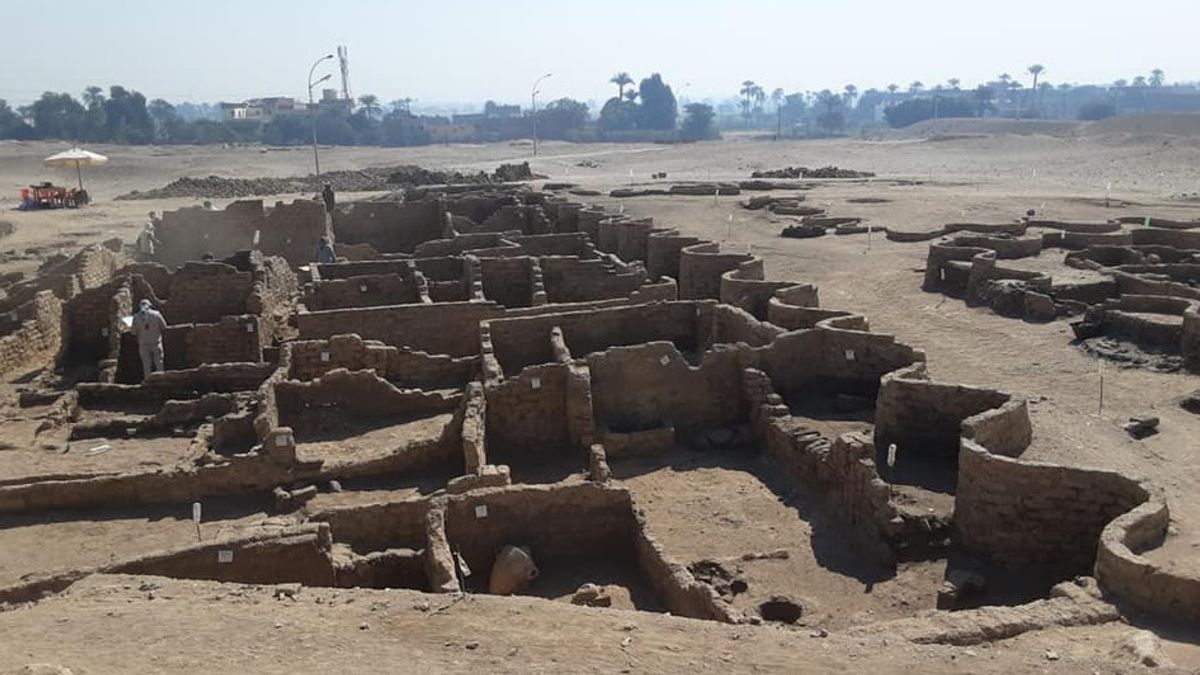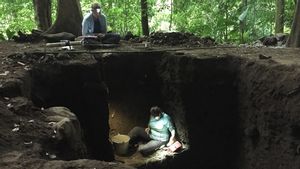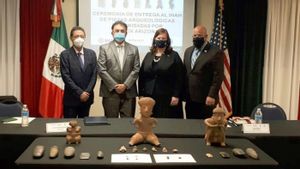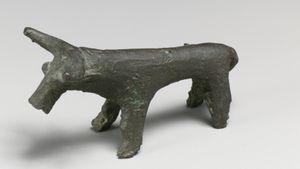JAKARTA - It is about 3,000 years old, but the ruins of this ancient city in Egypt are able to amaze a group of archaeologists who found it. As if it had not long been abandoned, because the traces of its ruins are clearly visible.
The city, named 'The Rise of Aten', was found under the sand on the west bank of Luxor, lead archaeologist Zahi Hawass said in a statement, as reported by CNN on Saturday, April 10.
It is thought that the ruins of this ancient city date back to the reign of King Amenhotep III, who ruled Egypt between 1391 and 1353 BC, according to the statement.
"It was the largest administrative and industrial settlement in the Egyptian imperial era," Hawass said.
Archaeologists found city streets flanked by houses, with 10-foot-high intact walls and rooms full of everyday life equipment, left behind by ancient inhabitants as if it had just happened yesterday.

Like rings, colored pottery vessels, mold castings for making amulets, pots used to carry meat, and tools for spinning, weaving, and making metal and glass.
The team also found a large bakery, complete with oven and storage earthenware, which of its size showed the store was used to serve a large number of workers and employees.
Other discoveries include the skeleton of a person buried with his hands outstretched to the side and a rope wrapped around his knees.
The location and position of the skeleton is somewhat strange and more investigations are underway, according to the statement, which described it as an extraordinary burial.
"The discovery of this lost city is the second most important archaeological discovery since Tutankhamun's tomb," Betsy Bryan, professor of Egyptology at Johns Hopkins University, said in the statement.

In addition, the team also found an inscription dating from 1337 BC, confirming that the city was active during the reign of Amenhotep III's son, Akhenaten.
Historians believe, a year after the pot was made, the city was abandoned and the capital was moved to Amarna, 250 miles to the north. But the reason for doing so remains unknown, explained the statement.
"The discovery of the lost city will not only give us a rare view of the life of the Ancient Egyptians at a time when the empire was in the richest state. But, will it help us explain one of the greatest mysteries in history, why did Akhenaten and Nefertiti decide to move to Amarna?" Bryan added.
SEE ALSO:
Excavations, which began in September 2020, have found most of the southern part of the city. However, the northern region still has to be excavated.
A large grave and tomb, similar to the one in the Valley of the Kings, were also found but have not been explored.
"Only further excavations in the area will uncover what actually happened 3500 years ago," the statement concluded.
The English, Chinese, Japanese, Arabic, and French versions are automatically generated by the AI. So there may still be inaccuracies in translating, please always see Indonesian as our main language. (system supported by DigitalSiber.id)


















